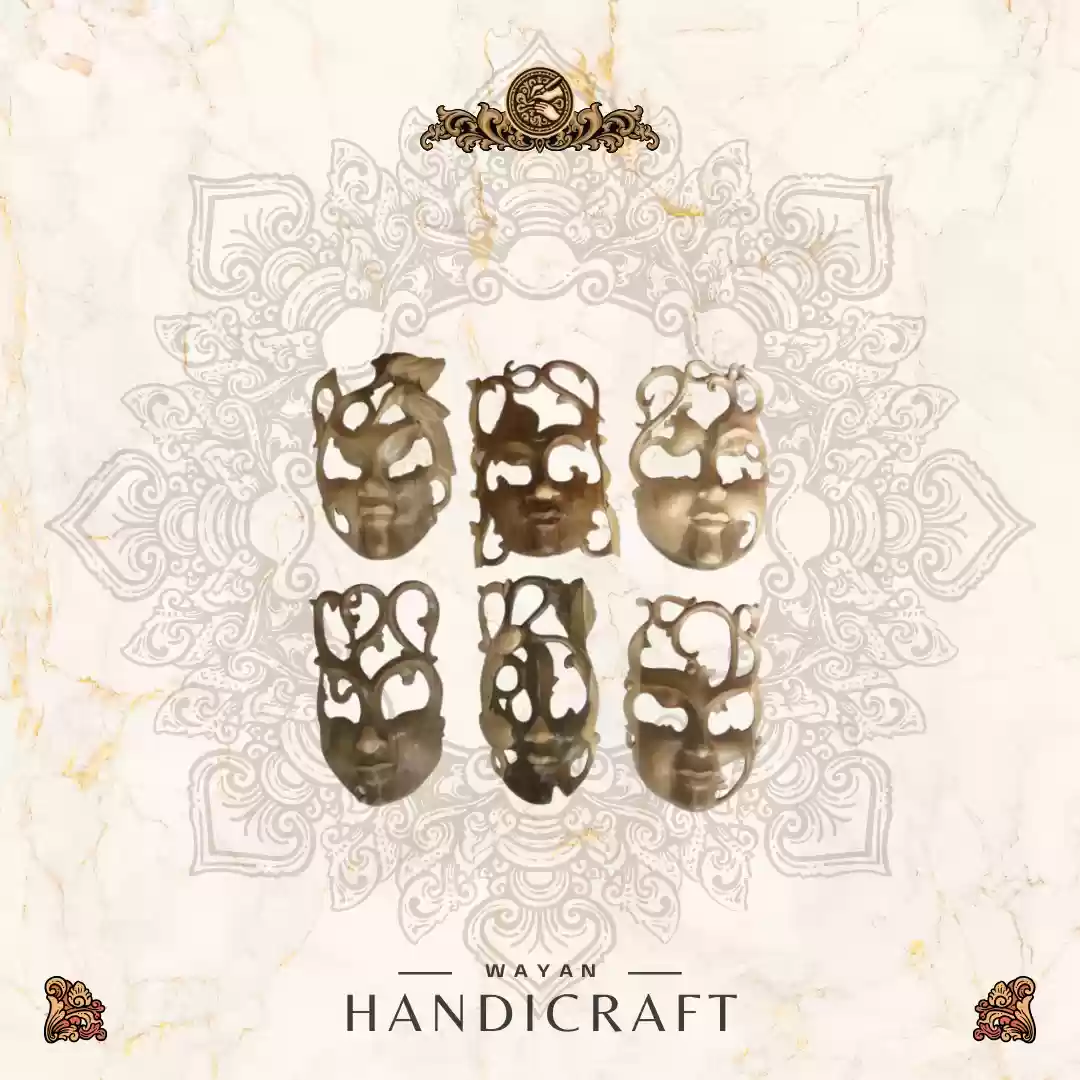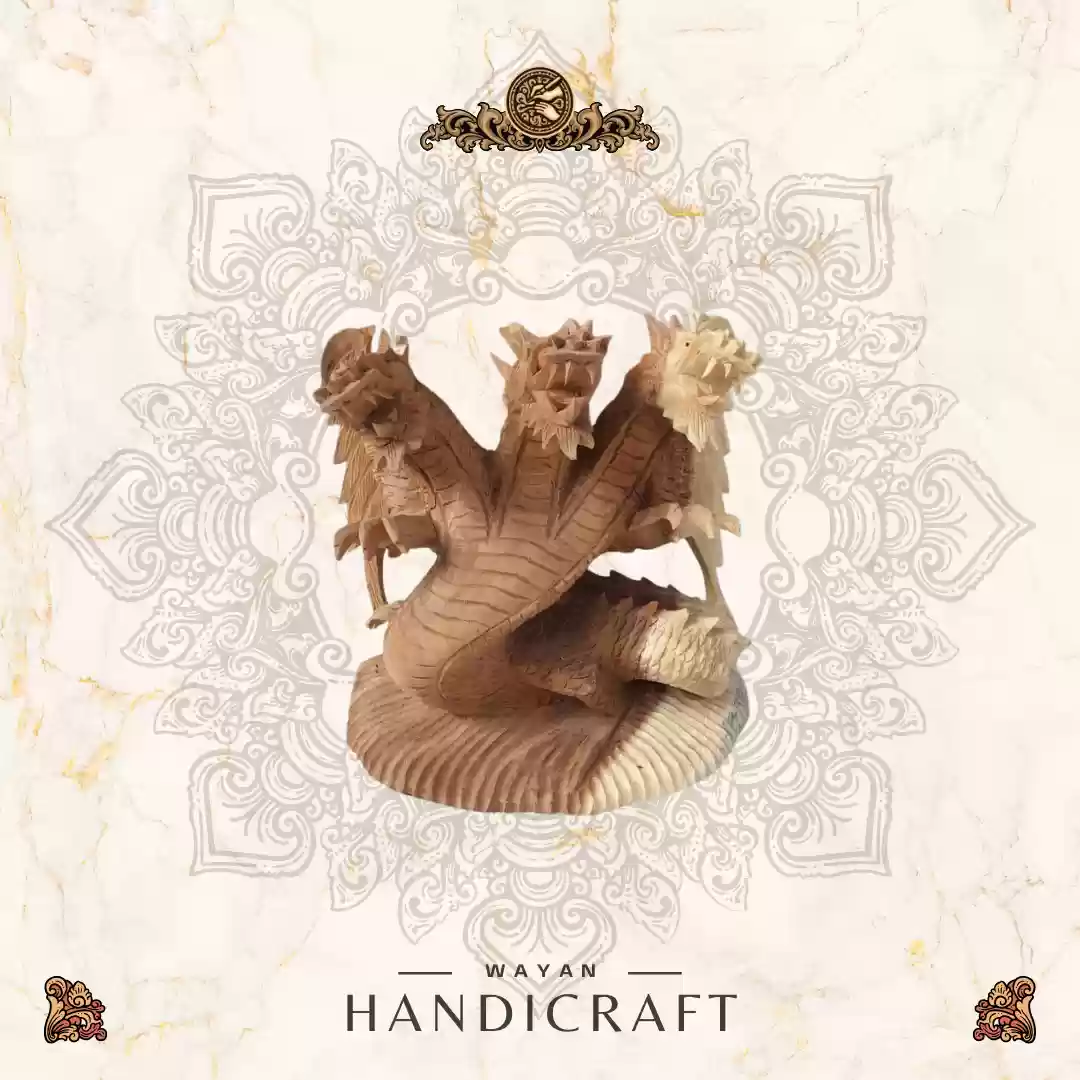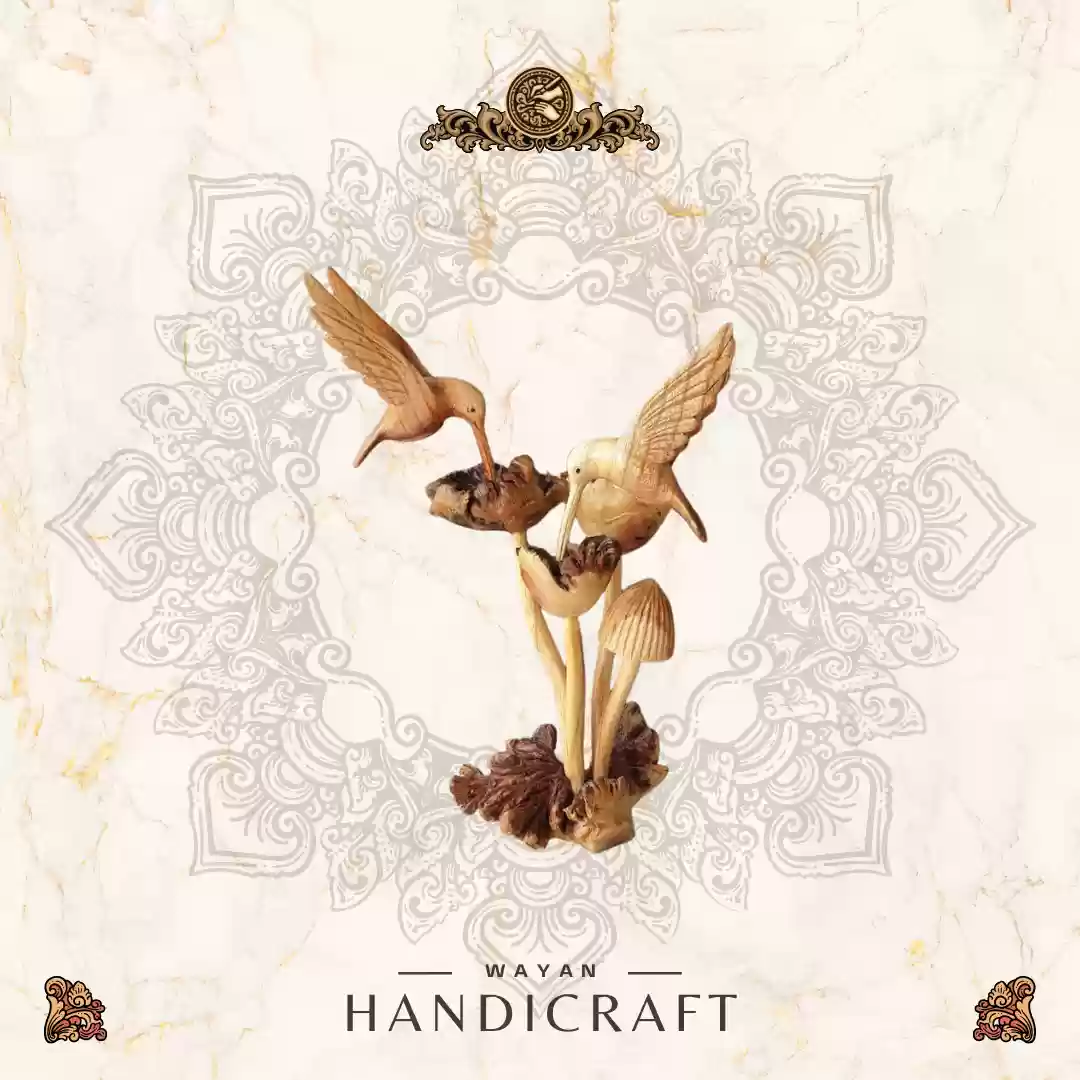How Balinese Handicrafts Are Made: From Sacred Wood to Soulful Art

When you hold a piece of handcrafted Bali art, you’re not just holding an object—you’re holding a story. A spiritual lineage. A moment of stillness transformed into something eternal. Unlike mass-produced souvenirs, Balinese handicrafts are living traditions passed down through generations, rooted in culture, infused with meaning, and lovingly shaped by hand.
But what makes these crafts so soulful? What lies behind the beauty? In this article, we take you deep into the world of artisan wood carving in Bali, revealing the sacred process behind every statue, mask, and artistic creation.
1. It Begins with the Wood: Choosing Sacred Natural Materials
The journey of every Balinese carving starts not in a studio, but in nature.
Balinese artisans don’t simply choose any wood—they wait for the right one. The island is rich in various types of timber, each with its own symbolism, grain, texture, and spiritual energy. Some of the most commonly used woods include:
- Suar Wood (Rain Tree): Known for its bold grain patterns and warm color, suar is a favorite for both decorative and spiritual pieces. It’s considered sustainable and fast-growing.
- Teak Wood: Durable and beautiful, teak is used for more detailed works and large statues. It’s often chosen for its strength and longevity.
- Crocodile Wood (Panggal Buaya): Pale and smooth, ideal for fine detail work.
- Ebony & Sandalwood: Rare, fragrant, and often reserved for sacred or ceremonial carvings.
Wood selection isn’t just technical—it’s intuitive. Many artisan wood carving Bali masters will meditate or pray before harvesting wood, believing the tree has its own energy. It’s not uncommon to ask for spiritual permission before cutting.
2. The Tools of Tradition: Simple Yet Precise
Unlike factory tools, Balinese artisans rely on a humble but powerful set of hand tools: chisels, mallets, knives, and gouges. The mastery lies not in machinery, but in the rhythm of the hand.
Each tool serves a specific purpose:
- Ulu kayu (main chisel): used for outlining forms
- Pahat lekuk (curved chisels): for shaping curves and contours
- Pisau raut: fine knives for detailing facial expressions, clothing, or mythological symbols
There is no CAD software or laser cutting. Everything is hand-carved, guided by muscle memory, intuition, and years of experience. Watching a master carver at work is like watching a dance — fluid, intentional, and deeply focused.
3. The Artisan’s Touch: Skill, Patience, and Soul
How Balinese handicrafts are made cannot be separated from who makes them. These crafts are the result of a lifetime of learning — often from father to son, or mother to daughter.
Most carvers in Bali begin their apprenticeship as children, learning not only the physical techniques but also the stories, rituals, and meanings behind each figure. A statue of Barong, for example, isn’t just an art piece. It’s a sacred guardian. A carving of Dewi Sri isn’t merely decorative—it’s a symbol of rice, prosperity, and life itself.
Every movement of the chisel is a prayer. Every sculpture reflects not just craftsmanship, but worldview. That’s why people across the globe seek out handcrafted Bali art—because it carries more than beauty. It carries spirit.
4. Sacred Symbols: Carving Meaning Into Form
One of the most powerful aspects of Balinese art is its symbolic richness. The figures chosen for carving are not random; they represent the spiritual backbone of the island.
Popular motifs include:
- Barong: A protector spirit in Balinese mythology, often placed at entrances.
- Garuda: The mythical bird and vehicle of Vishnu, symbolizing courage and loyalty.
- Dewi Sri: The goddess of rice and fertility, carved to honor abundance.
- Buddha Statues: For peace, enlightenment, and meditation spaces.
- Rangda Masks: Used for spiritual protection and ritual ceremonies.
Even abstract carvings carry meaning—waves symbolize water and flow, spirals represent life and transformation. This is why many choose to buy not just “decor,” but purposeful objects imbued with Balinese spiritual philosophy.
5. The Finishing Ritual: Sanding, Polishing, and Blessing
Once the carving is complete, the artisan moves into the final stage—finishing the wood to bring out its full character.
The steps often include:
- Sanding by hand to smooth out the details
- Polishing with coconut oil or natural waxes to bring a warm glow
- Staining or leaving natural, depending on the piece
- Optional painting, especially for mythical or ceremonial masks
But what truly sets Balinese finishing apart is the blessing. Many artisans will bless their work with incense, chants, or even offerings before it is sold or shipped. This final ritual is a thank-you to the material, the ancestors, and the buyer — a transfer of energy from maker to keeper.
6. Behind the Scenes: Why You Should See the Process
One of the most enriching experiences for travelers is witnessing the making of these crafts. In Ubud, Mas Village, and other artisan hubs, visitors can often see firsthand how raw wood becomes a spiritual artifact.
If you’re browsing Wayan Handicraft online, we provide behind-the-scenes glimpses into our process—photos, videos, and artisan interviews—so you too can connect with the heart behind the handwork.
When you understand how Balinese handicrafts are made, you understand why they’re so valuable. They are not just souvenirs. They are legacies.
Why Handmade Matters: The Beauty of Slowness
In a fast world, handmade items remind us of slowness, of care, of attention to detail. When you invest in handcrafted Bali art, you are:
- Supporting real people and local families
- Preserving cultural traditions threatened by mass production
- Bringing intentional, soulful energy into your living space
- Reducing the environmental impact of machine manufacturing
No factory can replicate the feeling you get when you touch something truly handcrafted. There’s a pulse, a memory, a presence — and that’s what Wayan Handicraft is proud to offer.
Where to Find Artisan Wood Carving Bali Online
If you want to buy handcrafted Balinese art but can’t make the journey to Ubud or Mas, you can shop online at Wayan Handicraft.
Every product is:
- 100% handmade by local artisans
- Ethically sourced from sustainable wood
- Carefully packed and shipped worldwide
- Accompanied by the story of the craft and the artisan behind it
Final Reflection: Holding a Soul in Your Hands
Balinese crafts are more than wood and shape. They’re extensions of history, vessels of prayer, and reflections of spirit. In each carving lives the rhythm of an island—its people, its gods, its beauty.
Understanding how Balinese handicrafts are made allows you to appreciate what your hands hold. It’s not just decor. It’s a relationship. Between you and Bali. Between the maker and the world.
So the next time you admire a carved elephant or sacred Garuda, pause—and feel the story behind the wood.
Latest Article
Bring a Piece of Bali Home
Explore our collection of authentic Balinese crafts — handmade with soul, rooted in tradition, and shipped to you wherever you are in the world.





